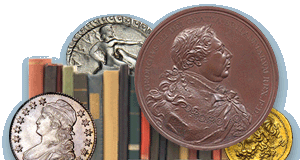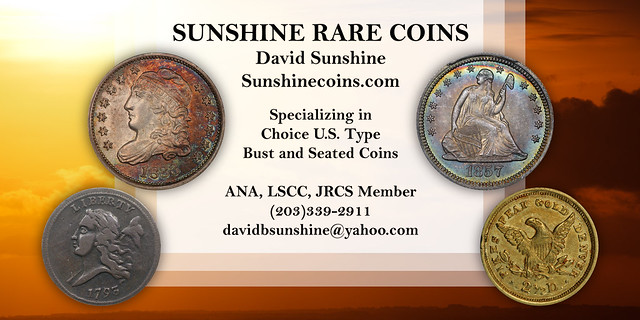
Mike Markowitz wrote an article in CoinWeek on the coins of Charlemagne. Here's an excerpt - see the complete article online.
-Garrett
The Roman system of coinage outlived the Roman Empire itself. Prices were still being quoted in silver denarii in the time of Charlemagne, king of the Franks, from 768 to 814. The difficulty was that by the time Charlemagne was crowned Imperator Augustus in 800, there was a chronic shortage of silver in Western Europe.… So rare was the denarius in Charlemagne's time that twenty-four of them sufficed to buy a Carolingian cow. (Ferguson, 2008. page 24)
We don't know where he was born – possibly somewhere in what is now Belgium. The year is uncertain – some sources indicate 742, while others suggest 747 or 748. Ironically, his name in the English-speaking world is Charlemagne, a French version of Charles the Great, although his mother tongue was Old High German, and he would have referred to himself as Karlus (or Carlus). This name appears on many of his coins. His father, Pepin the Short, was king of the Franks (ruled 751-768). His grandfather was Charles Martel (c. 688-741), the legendary warlord who defeated the Muslim invasion of Gaul at the Battle of Tours (October 10, 732). He fathered at least twenty children by numerous women; some historians regard Charlemagne as the Father of Europe. The extensive coinage in his name set the pattern for Western European currency for centuries to come.
The Coins of Charlemagne Tell a Story
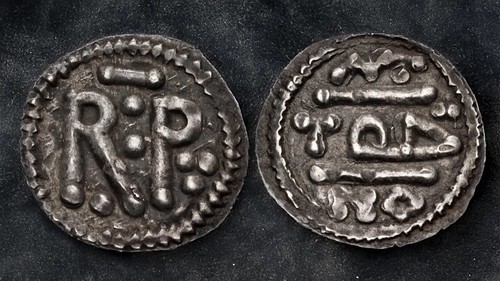 Pépin the Short. 754/5-768. Silver Denier (18mm, 1.10 g) Uncertain mint, possibly St. Denis. Depeyrot 892/2. Image: CNG / CoinWeek.
Pépin the Short. 754/5-768. Silver Denier (18mm, 1.10 g) Uncertain mint, possibly St. Denis. Depeyrot 892/2. Image: CNG / CoinWeek.
When Karl's father, Pepin the Short, came to the throne in 751, the currency of the Frankish kingdom was a mess. Under the do-nothing kings of the previous Merovingian dynasty, hundreds of local mints – often just a village blacksmith or goldsmith's shop – turned out a bewildering variety of crudely struck pieces in small batches without any standardization of weight, silver alloy fineness, or design. Most coins were deniers (from the Latin denarius), nominally weighing about 1.3 grams, although many were severely underweight. There was also a small obole, valued at half a denier. In 755, Pepin initiated a major coinage reform, bringing all minting under royal control. Pepin's new denier bore bold letters R:P on the obverse, abbreviating the Latin Rex Pipinus (King Pepin. ) Reverses bore a few garbled letters, possibly an abbreviated name of the mint; many of these have never been deciphered.
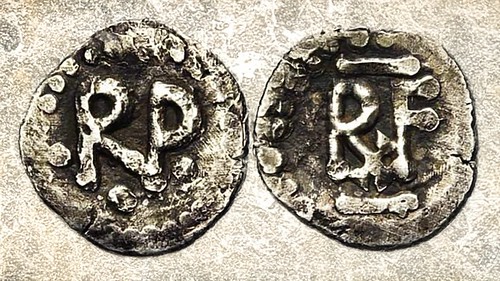 Pepin the Short (751-768), Silver obol, no mint name. 0.56g. Extremely rare. Unique and unpublished. Image: Jean Elsen & ses Fils S.A. / CoinWeek.
Pepin the Short (751-768), Silver obol, no mint name. 0.56g. Extremely rare. Unique and unpublished. Image: Jean Elsen & ses Fils S.A. / CoinWeek.
Pepin's silver oboles are very rare. The reverse often bears the letters R F for Rex Francorum (King of the Franks. ) An example described as Unique and Unpublished, Very Fine was unsold against an estimate of €7,500 in a 2014 Belgian auction.
Charlemagne and the Formation of the Holy Roman Empire
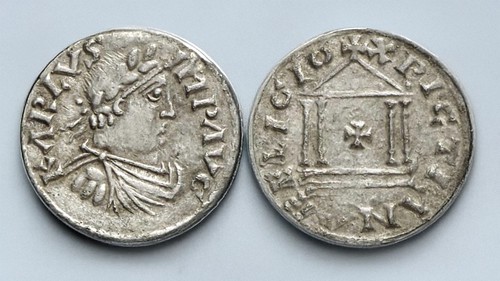 Karl Class 4 portrait Silver Denier, undetermined mint. c. 812-814. 1.53 g Depeyrot 1166. Image: Künker / CoinWeek.
Karl Class 4 portrait Silver Denier, undetermined mint. c. 812-814. 1.53 g Depeyrot 1166. Image: Künker / CoinWeek.
On Christmas Day in the year 800, Pope Leo III crowned Charlemagne as Roman Emperor, initiating the so-called Holy Roman Empire, which French philosopher Voltaire (1694-1778) noted was neither holy, nor Roman, nor an empire. This coronation was politically possible because Empress Irene in Constantinople had deposed and blinded her son, Constantine VI, in 797, seizing the imperial throne for herself. As far as the Franks were concerned, the absence of a male ruler meant the imperial throne was vacant. In 812, envoys from the Byzantine Empire finally recognized Karl's imperial title. Possibly to celebrate this event, Karl issued the rare Class 4 denier, bearing his laurel-crowned portrait, with the Latin inscription KARLVS IMP AVG (Karl Emperor Augustus. ) To reinforce the message that his imperial coronation was blessed, the reverse bears the image of a church with the inscription XPICTIANA RELIGIO (The Christian Religion. ) Only about 55 examples of this rare type are known, struck from several different dies, at an uncertain mint or mints (possibly Karl's capital of Aachen).
To read the complete article, see:
the Coins of Charlemagne
(https://coinweek.com/exploring-the-coins-of-charlemagne-mike-markowitz/)
Wayne Homren, Editor
The Numismatic Bibliomania Society is a non-profit organization
promoting numismatic literature. See our web site at coinbooks.org.
To submit items for publication in The E-Sylum, write to the Editor
at this address: whomren@gmail.com
To subscribe go to: Subscribe
Copyright © 1998 - 2025 The Numismatic Bibliomania Society (NBS)
All Rights Reserved.
NBS Home Page
Contact the NBS webmaster
|




